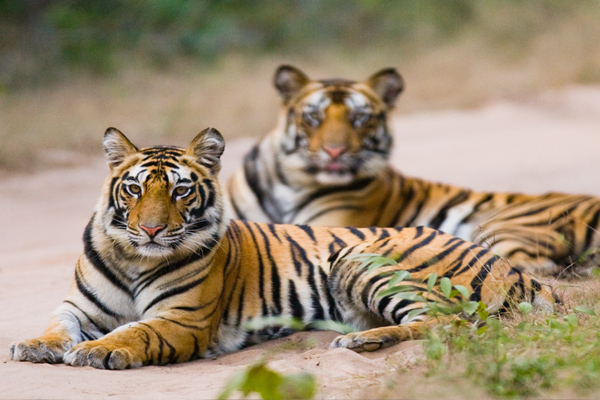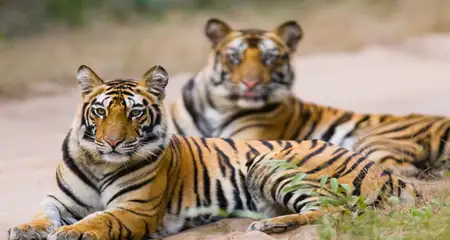To most people, 29th July would be just another day. But, if you are a wildlife enthusiast, just the mention of this date would make your hair rise with excitement and pride, because you know that 29th July is International Tiger Day! The tiger (scientific name Panthera tigris) is the largest of the big cats; yes, even larger than the lion (Panthera leo) on average. From around 1,00,000 in the early 20th century, tiger numbers have dwindled significantly, and currently, only around 5,500 exist; that too, a result of conservation efforts. Of these 5,500, India is alone home to more than 3,500 of them! Wondering where to see the tiger in India? Then check out our list of the best places to do so:
1. Corbett National Park
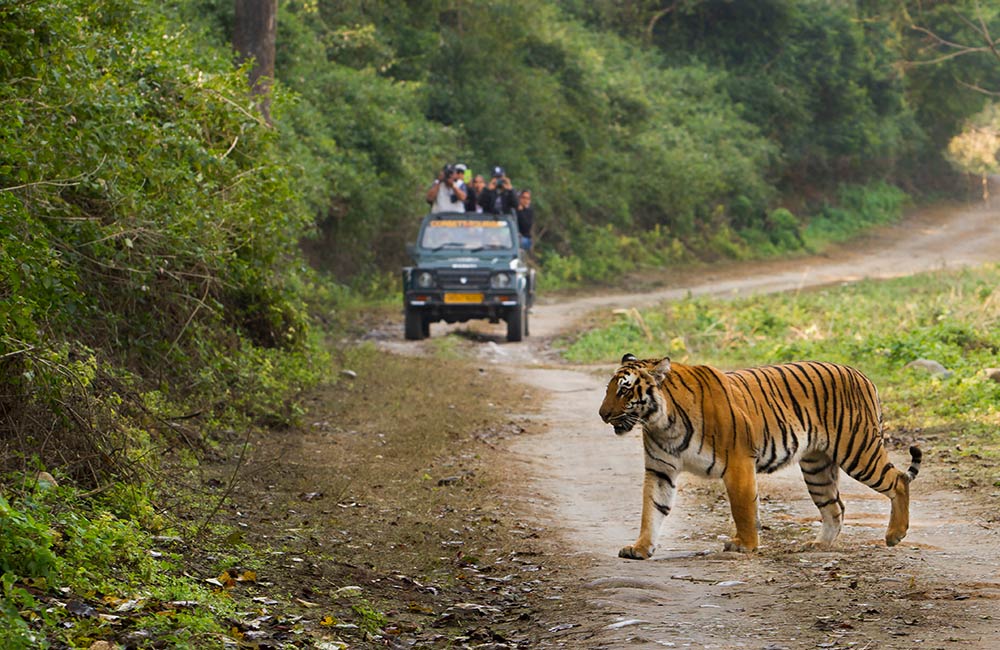
Originally established as Hailey National Park in 1936, this is where Project Tiger was launched in 1974. The national park encompasses flat grasslands, low-lying jungles as well as thickly forested hills. It has five tourist zones, each with a charm of its own. Morning and evening jungle safaris are offered on canters and jeeps. Remember to visit the Ramganga reservoir, as a large number of animals come here to quench their thirst, so the chances of seeing a tiger hunt a deer are quite high.
- Area: 1,318.54 square kilometres
- Other Prominent Species: Elephant, gharial, leopard, spotted deer, Pallas’ fish eagle, muntjac, crocodile
- Visiting Season: 15th November to 15th June
- Entry Fee: ₹200 onwards
- Nearest Railway Station: Ramnagar (1.2 km)
- Nearest Airport: Pantnagar airport (82.2 km)
FYI, a trip to Corbett National Park can be easily done as part of a weekend getaway from Delhi
2. Bandhavgarh National Park
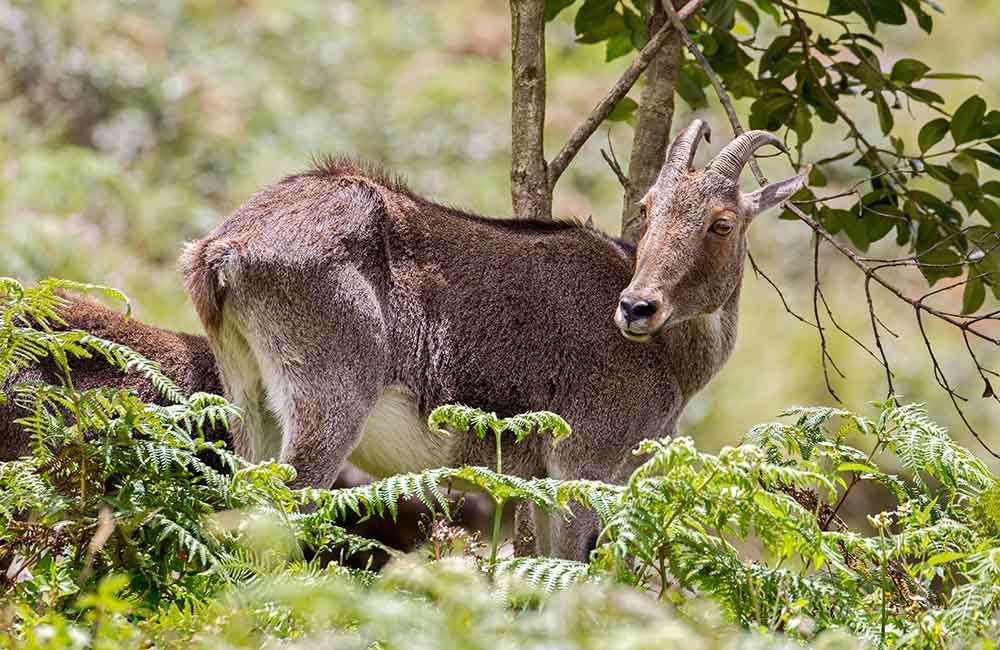
Situated amidst the Vindhyan and Satpura ranges of the Deccan Plateau, Bandhavgarh National Park has eight tigers in every square kilometre, so there is no way you won’t see one here. You can opt for a safari on a Jeep as well as on elephant back, for more fun and excitement. There is even a fort here, Bandhavgarh Fort, which has connections to the Ramayan. Just like most tiger reserves in India, Bandhavgarh has a mix of grasslands, thick forests and hills, which make it home to numerous animals.
- Area: 1,536 square kilometres
- Other Prominent Species: Sambar, leopard, wild boar, nilgai, four-horned antelope, muntjac, chinkara, gaur, golden jackal, Bengal fox, striped hyena, Egyptian vulture, sarus crane, lesser adjutant, crested serpent eagle, changeable hawk eagle, black vulture, long-billed vulture, white-backed vulture
- Visiting Season: 25th October to 30th June
- Entry Fee: ₹250 onwards
- Nearest Railway Station: Umaria (33 km)
- Nearest Airport: Rani Durgawati airport, Jabalpur (177 km)
3. Ranthambore National Park
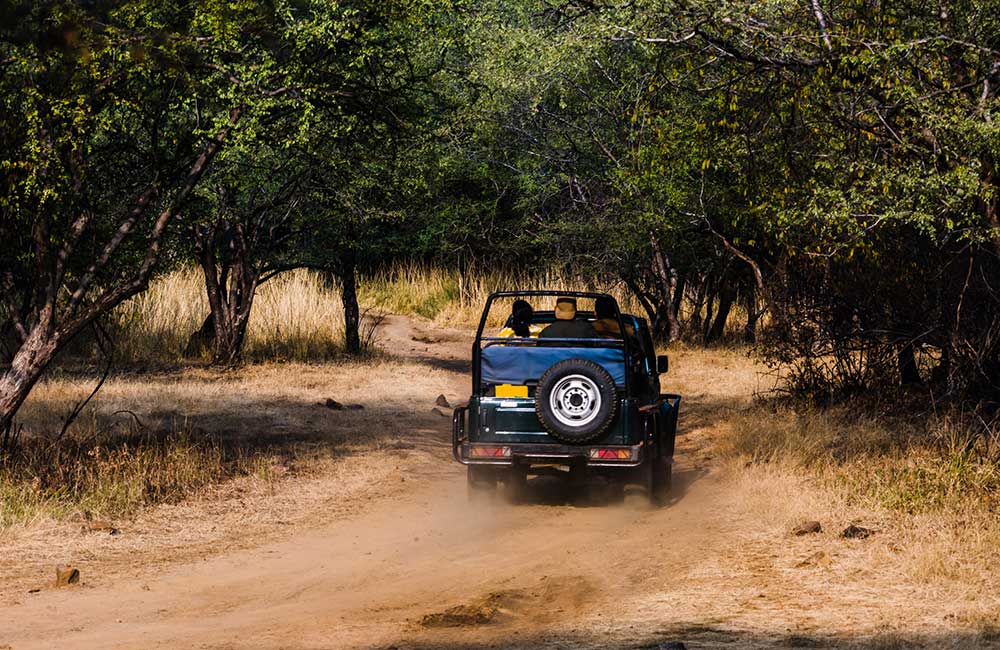
Corbett may be the first national park and tiger reserve in India, but none has had its praise sung in magazines and TV shows more than Ranthambore National Park. It was the home of Machhli, one of the most famous tigers in history. She may be dead now, but her sons and daughters still wander around in the forests, like the true rulers of this wildlife-rich domain. Compared to two litters that tigers generally have, she had four, producing 11 cubs in total, as result of which, most of the tigers in the park today are her descendents.
- Area: 1,334 square kilometres
- Other Prominent Species: Spotted deer, nilgai, sambar, chinkara, desert fox, wild boar, sloth bear, golden jackal, sarus crane, peafowl, owl, kingfisher, pelican, crested serpent eagle, flamingo, stork
- Visiting Season: 1st October to 30th June
- Entry Fee: ₹100 onwards
- Nearest Railway Station: Sawai Madhopur (14.6 km)
- Nearest Airport: Jaipur International Airport (182 km)
Plan a weekend getaway from Jaipur to visit this and many other incredible places
4. Kanha Tiger Reserve
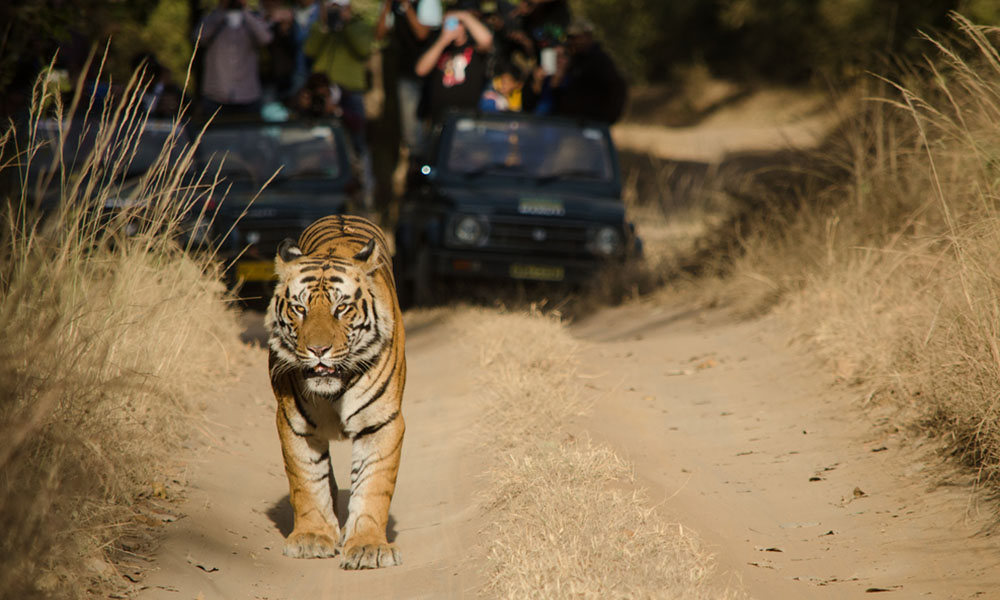
One of the best places to see tigers in India, Kanha Tiger Reserve encompassed Kanha National Park and several buffer zones. The thick woods and long golden grasses here provide the perfect cover for tigers, who stay amidst them for hours, waiting for their prey. While a Jeep safari offers more comfort, elephant safaris offer a better view from a greater height; both ways, you are sure to have the experience of a lifetime. A popular spot within the reserve is a sunset spot, known as Bamni Dadar.
- Area: 2,052 square kilometres
- Other Prominent Species: Spotted deer, swamp deer, sambar, muntjac, blackbuck, four-horned antelope, wild boar, gaur, golden jackal, dhole, sloth bear, steppe eagle, lesser adjutant, peafowl, crested serpent eagle, striped hyena, nilgai
- Visiting Season: 16th October to 30th June
- Entry Fee: ₹250 onwards
- Nearest Railway Station: Jabalpur (126 km)
- Nearest Airport: Rani Durgawati airport, Jabalpur (131 km)
5. Pench National Park
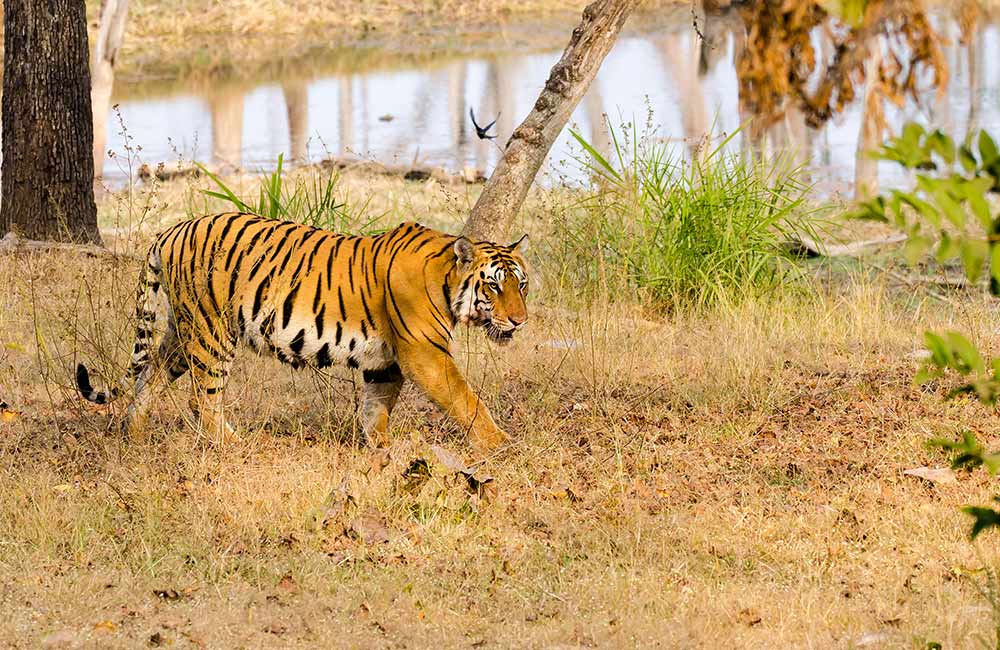
Ever watched Mowgli or read The Jungle Book? Pench is the place the book was inspired by, so when you visit this national park, you enter The Jungle Book! As is common with protected areas in the Deccan Plateau region, Pench National Park is a mix of flat expanses and forested hills, interspersed with rivers and large reservoirs. With no human settlements inside the park, the animals roam about freely, giving tourists ample sighting opportunities.
- Area: 293 square kilometres
- Other Prominent Species: Leopard, Indian wolf, sloth bear, dhole, fox, striped hyena, gaur, spotted deer, four-horned antelope, wild boar, nilgai, peafowl, golden jackal, chinkara, muntjac
- Visiting Season: 16th October to 30th June
- Entry Fee: ₹15 onwards
- Nearest Railway Station: Nagpur (78.9 km)
- Nearest Airport: Dr. Babasaheb Ambedkar International Airport, Nagpur (86.1 km)
6. Kaziranga National Park
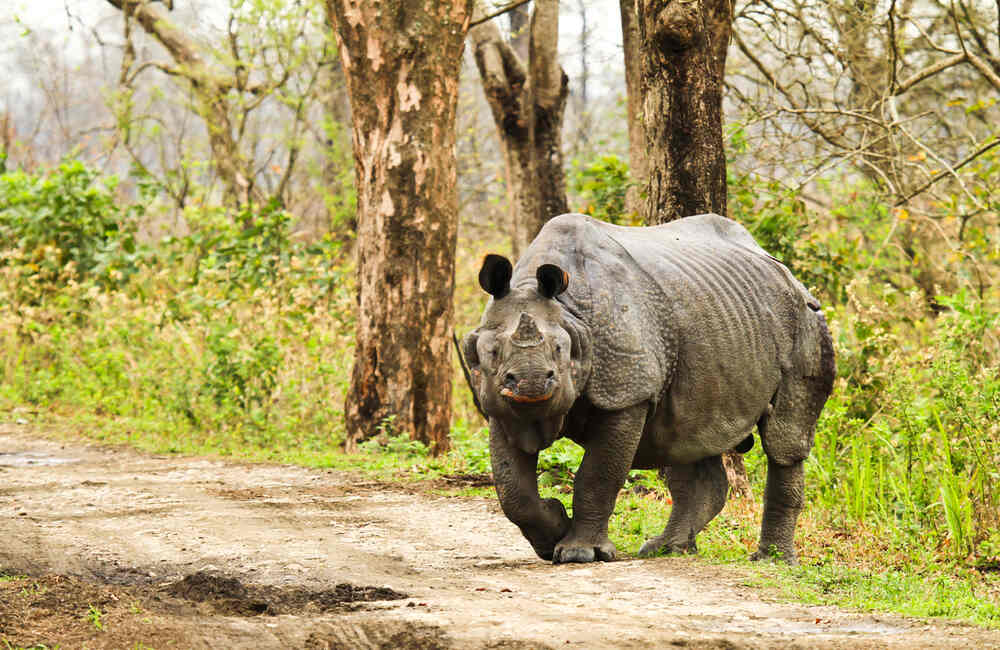
Although Kaziranga National Park is known for its large population of one-horned rhinos, it is another great place to see the tiger in India. The national park contains swamplands, the characteristic grasslands called dooars and dense jungles, which provide ample cover and prey for the big cats. Apart from its wildlife, which has made it a UNESCO World Heritage Site, Kaziranga is also known for its regular floods, which, as per experts, are necessary to maintain the regional ecosystem. It is truly a land of giants, with three of the heaviest and largest mammals in the world living here in large numbers.
- Area: 430 square kilometres
- Other Prominent Species: Indian elephant, one-horned rhino, gaur, wild water buffalo, hog deer, swamp deer, leopard, bar-headed goose, ruddy shelduck, Eurasian eagle owl, Himalayan griffon, Pallas’ fish eagle, cinereous vulture, Indian vulture, white-rumped vulture, slender-billed vulture
- Visiting Season: 1st November to 30th April
- Entry Fee: ₹50 onwards
- Nearest Railway Station: Nagaon (74.6 km)
- Nearest Airport: Lokpriya Gopinath Bordoloi International Airport, Guwahati (213 km)
7. Nagarahole National Park
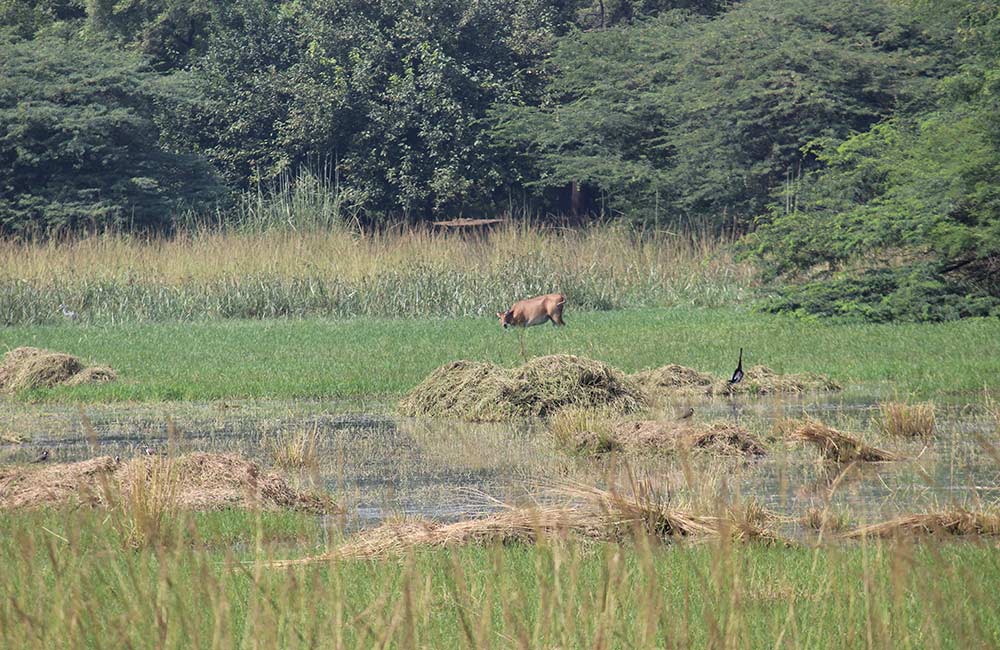
Located at the foot of the Western Ghats, Nagarahole National Park is one of the best places to see the tiger in South India. The park is named so because a number of rivers snake through it; ‘naga’ being the Hindi word for snake and ‘holey’ being the regional word for river. Along with rivers, there are numerous natural and artificial lakes here, which are popular watering holes among the wild residents of the park. Apart from tigers, which are the major highlight, the national park is also an Important Bird Area, with over 250 species of winged creatures.
- Area: 643 square kilometres
- Other Prominent Species: Gaur, Asian elephant, sloth bear, golden jackal, striped hyena, sambar, spotted deer, four-horned antelope, muntjac, leopard, dhole, wild boar, white-backed vulture, lesser adjutant, Nilgiri wood pigeon, greater spotted eagle, red-headed vulture, grey-headed fish eagle
- Visiting Season: October to May
- Entry Fee: ₹200 onwards
- Nearest Railway Station: Mysore (87.7 km)
- Nearest Airport: Kempegowda International Airport, Bangalore (263 km)
Nagarahole National Park can easily be visited as part of an extended weekend getaway from Bangalore to Mysore.
8. Panna National Park
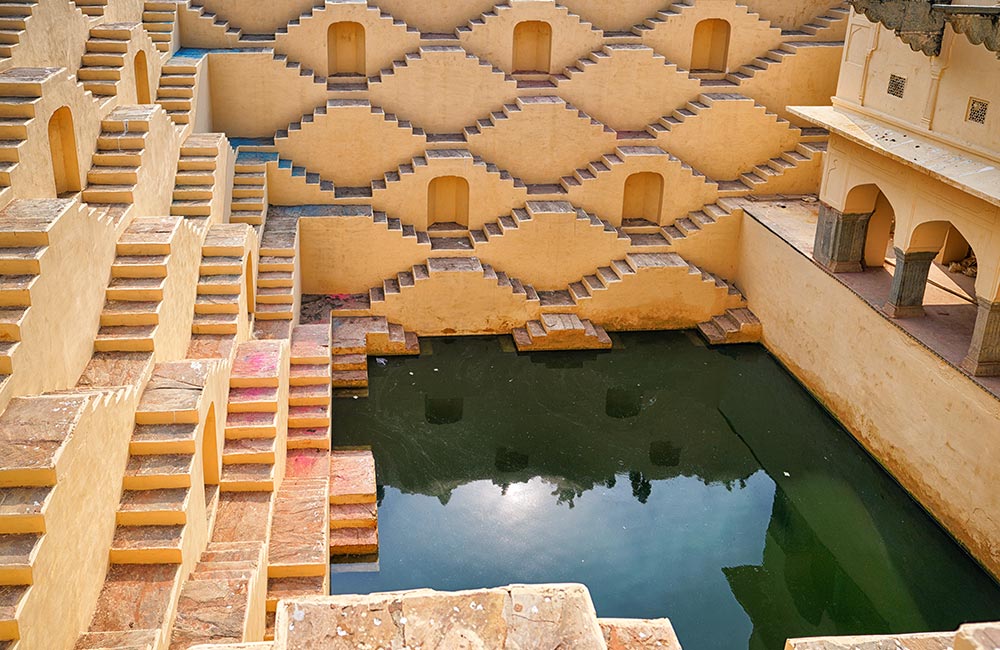
Though the star of this national park is the tiger, Panna also has numerous other treasures for people, including years-old stone paintings, hiking trails and even waterfalls. Apart from the usual Jeep and elephant safaris through the park, you can also enjoy a boat ride on the Ken River, which is home to gharials and numerous other aquatic species. Since losing all of its tigers in 2009 to poaching, Panna National Park has been fast regaining its big cat population, thanks to the efforts of the government and the World Wildlife Fund (WWF).
- Area: 1,598 square kilometres
- Other Prominent Species: Spotted deer, four-horned antelope, chinkara, stripe hyena, fox, golden jackal, nilgai, sambar, sloth bear, wild boar, jungle cat, dhole, Indian wolf, leopard, gharial, king vulture, white-necked stork, bar-headed goose
- Visiting Season: 15th October to 15th June
- Entry Fee: ₹250 onwards
- Nearest Railway Station: Chhatarpur (115 km)
- Nearest Airport: Rani Durgawati airport, Jabalpur (210 km)
9. Tadoba–Andhari Tiger Reserve
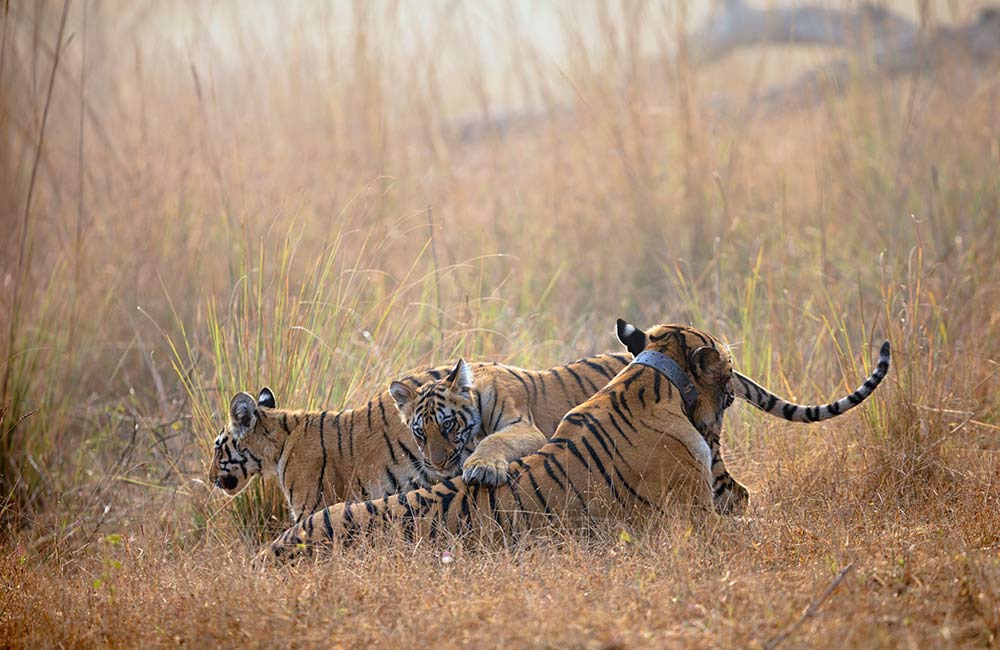
The largest protected territory in Maharashtra, Tadoba–Andhari Tiger Reserve encompasses Tadoba National Park and Andhari Wildlife Sanctuary. Tigers live both within the reserve as well as in the forests just outside, so sighting opportunities will be plenty. There are several small lakes inside the park and two large dam reservoirs in the periphery, which can be visited for guaranteed sightings of animals, especially in the summer season. The grasses that appear golden and brown in summers, take a lush green shade after the rains.
- Area: 625 square kilometres
- Other Prominent Species: Gaur, nilgai, sloth bear, sambar, muntjac, dhole, striped hyena, four-horned antelope, leopard, spotted deer, wild boar, changeable hawk eagle, crested serpent eagle
- Visiting Season: 16th October to 30th June
- Entry Fee: ₹10 onwards
- Nearest Railway Station: Nagpur (132 km)
- Nearest Airport: Dr. Babasaheb Ambedkar International Airport, Nagpur (125 km)
10. Sundarbans National Park
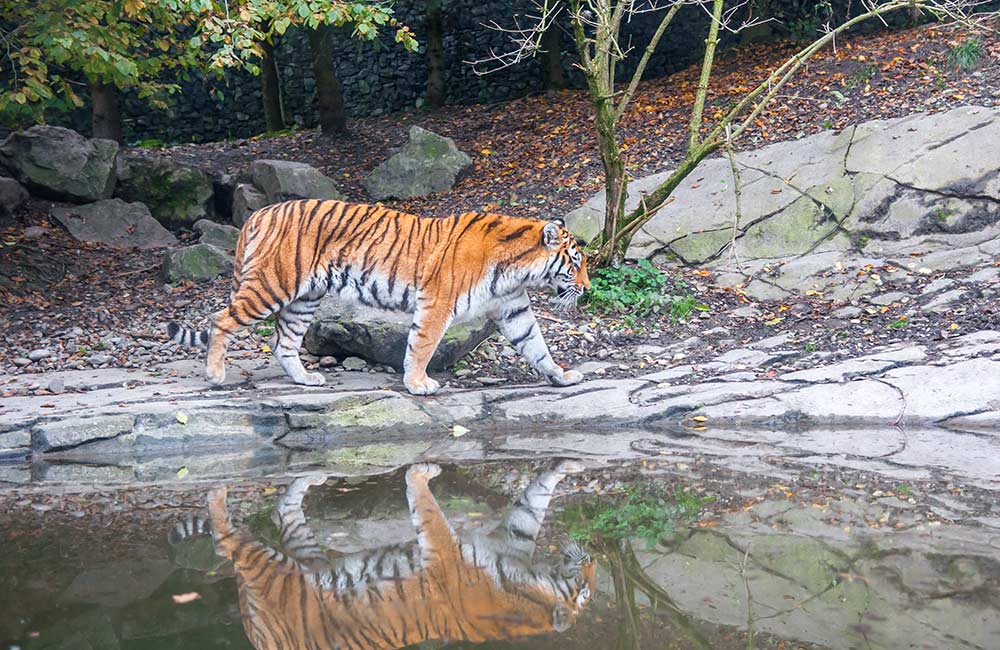
Sundarbans is one of the most unique tiger reserves in India, as the Jeep and elephant safaris here are replaced by boat rides. Being a vast swamp forest, with little hard ground and hundreds of distributaries of the Ganga flooding it almost completely, cars and elephants cannot travel, leaving navigating the rivers the only way of spotting the wildlife. The national park has several tribal settlements, which have found a way to coexist with these big cats, although altercations are frequent.
- Area: 1,330 square kilometres
- Other Prominent Species: Leopard cat, fox, fishing cat, spotted deer, saltwater crocodile, stork, grey-headed sea eagle, white-bellied sea eagle
- Visiting Season: November to March
- Entry Fee: ₹60 onwards
- Nearest Railway Station: Sealdah Station (115 km); Howrah Junction (124 km)
- Nearest Airport: Netaji Subhas Chandra Bose International Airport, Kolkata (119 km)
Also read our blog on the most popular weekend getaways from Kolkata
So, don’t wait. Plan a trip to any of these protected territories, just as they open in October, and capture this magnificent big cat, the pride of India, in your lenses, mind and heart. Just remember to maintain social distancing in these times of the coronavirus pandemic.


